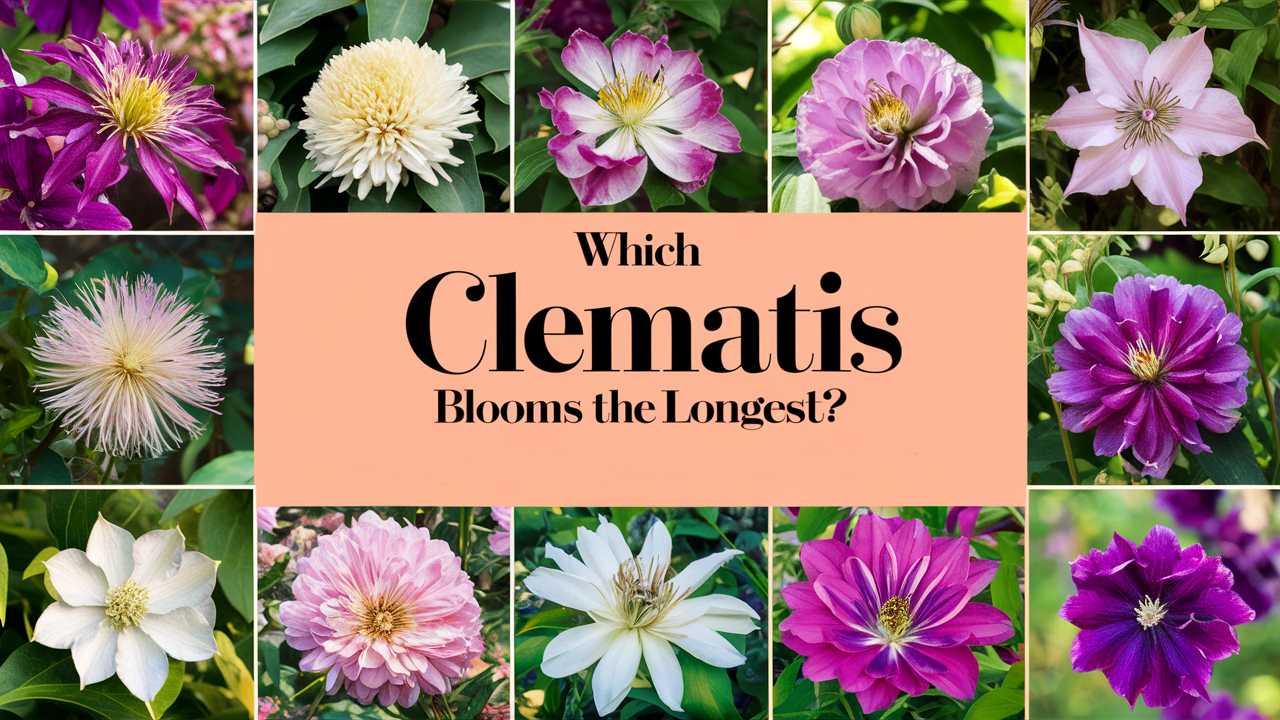Which Clematis blooms the longest? In this post, we’ll dig into the fascinating world of Clematis, exploring its different types, bloom times, care requirements, and, most importantly, uncovering which varieties offer the longest blooming periods.
Top Clematis Varieties with Extended Blooming Periods

While many Clematis varieties showcase the potential for lengthy bloom periods, some stand out for their remarkable ability to produce flowers for an extended time. Let’s examine a few of the top contenders that are widely regarded for their prolonged flowering.
1. Clematis ‘Jackmanii’
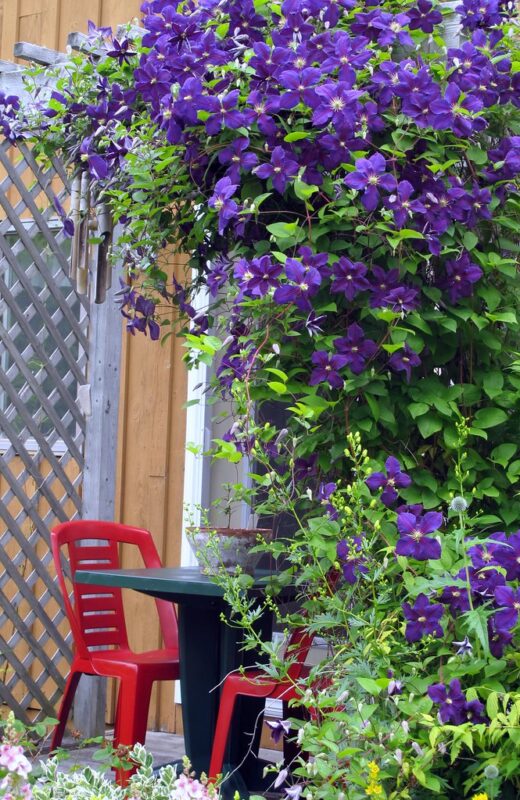
Beloved by gardeners, ‘Jackmanii’ is a robust vine that typically blossoms from mid-summer all the way into early fall. It features deep purple, velvety blooms that are around 6-8 inches in diameter. This variety is durable and adaptable, thriving in various conditions while providing a show-stopping display. With proper care, you can enjoy the blooms of ‘Jackmanii’ for several months.
2. Clematis ‘Nelly Moser’

Another popular choice, ‘Nelly Moser,’ blooms from late spring to late summer, producing large, pink, star-shaped flowers. This variety can bloom both on old and new wood, which adds to its extensive blooming period. Gardeners often enjoy these elegant flowers that can last well into the autumn months if conditions are favorable.
3. Clematis viticella ‘Polish Spirit’
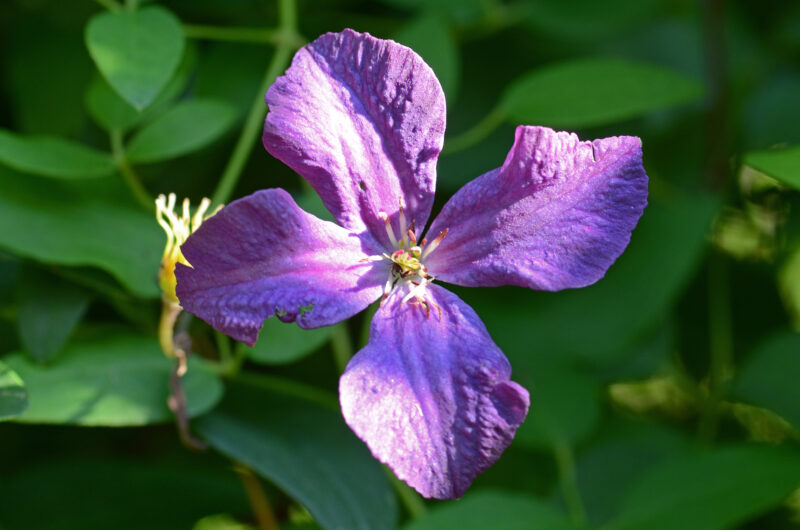
A standout among Group 3 vines, ‘Polish Spirit’ produces stunning deep purple flowers from mid-summer until autumn. Not only does this variety boast a long blooming season, but it’s also incredibly resistant to adverse growing conditions, making it a reliable choice for gardeners. Its capacity to intertwine with other plants makes it particularly desirable for creating layered garden aesthetics.
4. Clematis ‘Madame Julia Correvon’
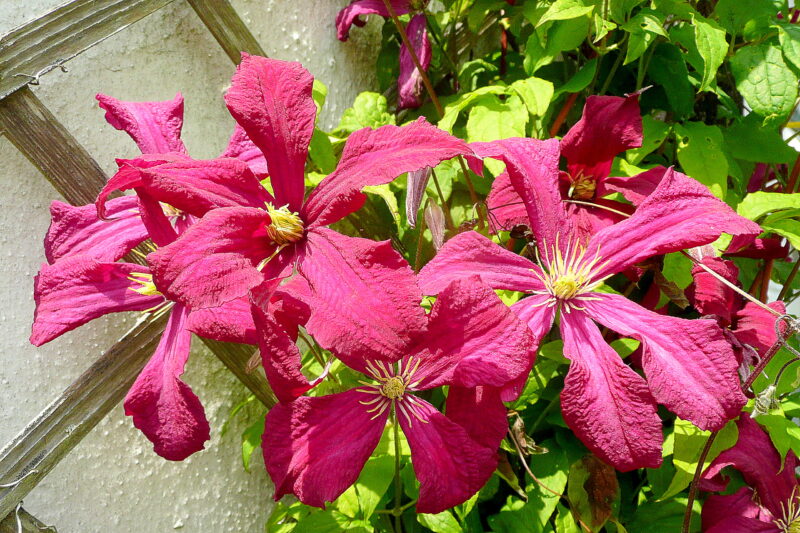
An exceptional performer ‘Madame Julia Correvon’ showcases a vibrant red hue and is known to flow from early summer through early autumn. The contrasting green foliage enhances its beauty, making it a striking addition to any landscape. This variety can grow up to 10 feet tall and is ideal for trellising.
5. Clematis ‘Cassandra’
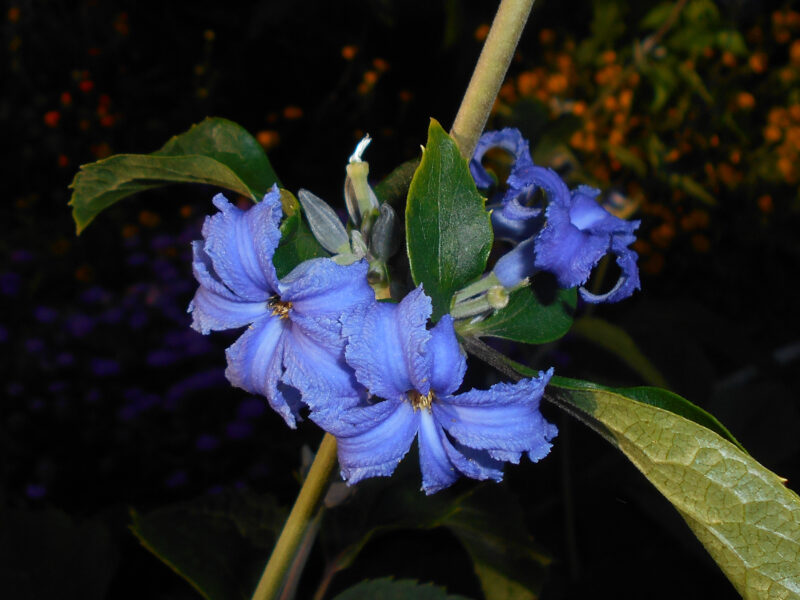
For those seeking a unique twist in shape, ‘Cassandra’ is a Group 3 variety that offers large, voluptuous, purple flowers with a stunning fragrance. It blooms from late spring until fall, hence offering a prolonged display that captivates not only the eye but also the senses.
6. Clematis ‘Etoile Violette’
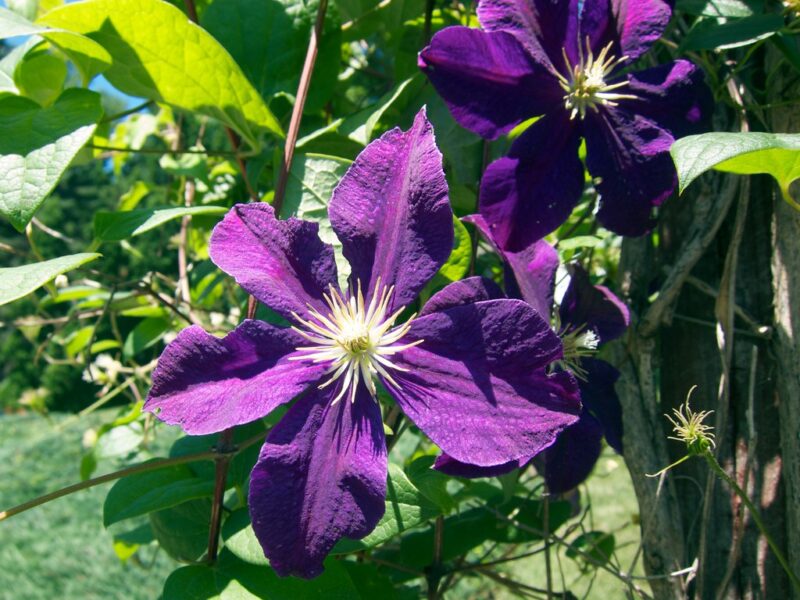
This charming variety features rich, dark purple blossoms that appear from late spring through early winter in mild climates. ‘Etoile Violette’ is also exceptionally resilient and easy to care for, making it a stellar choice for both novice and experienced gardeners.
7. Clematis ‘Sieboldii’
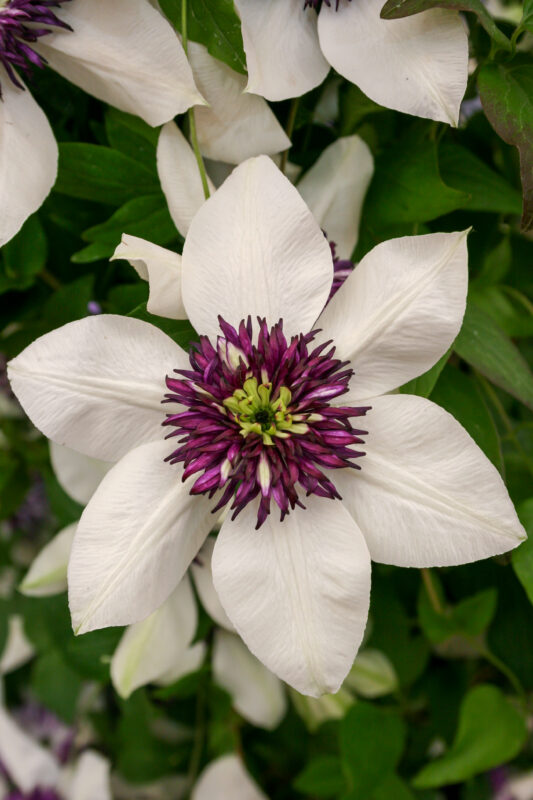
Known for its delicate, soft, pink petals edged with deep maroon, ‘Sieboldii’ offers a unique flowering experience from early summer to fall. Its unique flower shape and long blooming season make it particularly sought-after for those looking to introduce something different into their gardens.
The Life Cycle of Clematis Flowers
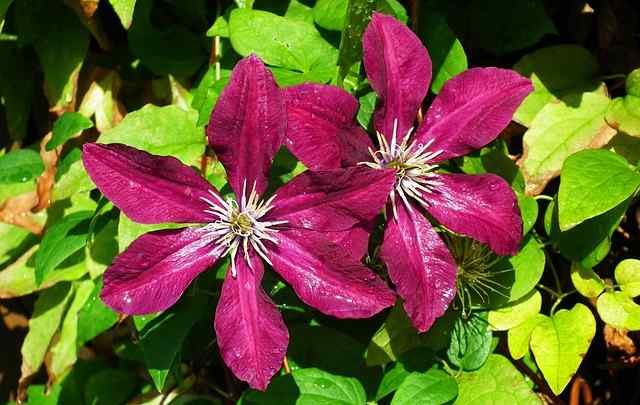
Clematis blooms can be categorized into three main groups based on their blooming habits:
Group 1 (Early Bloomers): These varieties bloom in early spring and usually flower on last year’s growth. Their blooms are often shorter-lived, typically lasting only a few weeks. Examples include ‘Clematis montana’ and ‘Clematis alpina.’
Group 2 (Late Spring to Early Summer Bloomers): This group flowers in late spring to early summer. They bloom on both old and new growth, leading to a more extended flowering period. ‘Nelly Moser’ and ‘Comtesse de Bouchaud’ are well-known examples.
Group 3 (Summer Bloomers): These Clematis varieties bloom in mid to late summer and into early fall, primarily flowering on new growth. This group often has the longest blooming period, making them popular choices for gardeners looking to enjoy vibrant blooms throughout the summer months. Notable examples include ‘Jackmanii’ and ‘Clematis viticella.’
Understanding these groups is crucial to narrow down which Clematis will bloom the longest, primarily focusing on Group 3 varieties.
Factors Affecting Bloom Duration
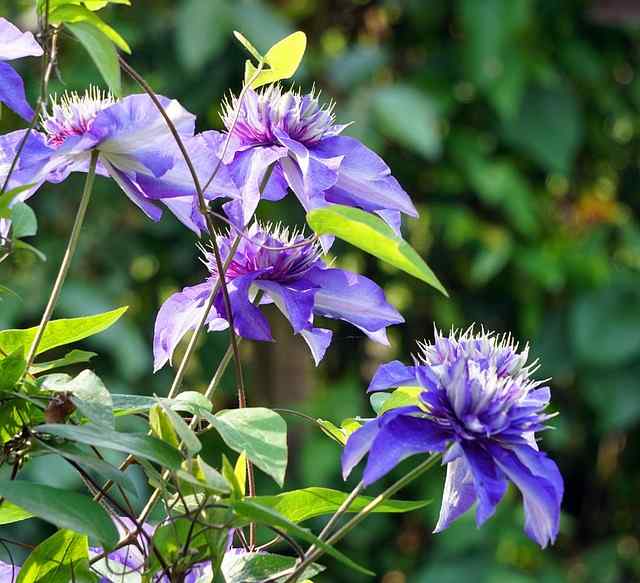
While specific varieties are known for their extended blooming periods, several environmental and care-related factors can influence how long a Clematis plant flowers.
Location and Climate: Clematis generally thrives in well-drained, sunny locations but appreciates some shade during the hottest parts of the day. In cooler climates, some varieties may bloom longer than in hotter ones, while excessive heat can shorten blooming periods.
Soil Conditions: The right soil composition can significantly affect bloom duration. Clematis prefers rich, loamy soils with good drainage. Adding organic matter can enhance soil health and promote better growth.
Watering Practices: Adequate moisture is vital, particularly in the weeks leading up to blooming. However, care must be taken not to overwater, as heavy saturation can stunt growth and impact flowering.
Pruning Techniques: Correct pruning can encourage more blooms. For instance, Group 3 varieties thrive when pruned in late winter or early spring, leading to an abundance of flowers when their new growth emerges.
Care Tips for Prolonged Blooming
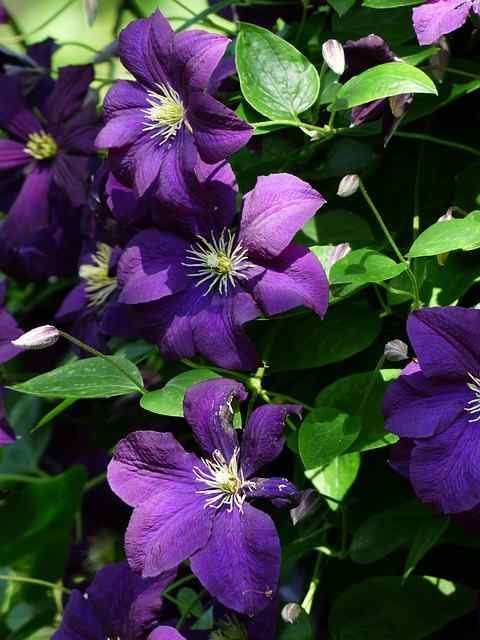
Now that we’ve identified some of the best Clematis varieties with lengthy bloom periods, it’s important to understand how to care for them to maximize their flowering potential. Here are some essential care tips that can help your Clematis flourish:
Planting
Timing: The best time to plant Clematis is in early spring or fall when temperatures are milder, allowing the roots to establish before the stress of heat or frost.
Spacing: Give each plant enough space to grow—generally about 2-3 feet apart—ensuring good airflow and preventing overcrowding.
Watering
Water regularly, especially during dry spells. Aim for about 1 inch of water per week, distributing it evenly.
Consider using mulch to retain moisture and regulate soil temperature, which helps keep roots cool.
Fertilizing
Use a balanced fertilizer in early spring and again in mid-summer. Organic options, such as compost or well-rotted manure, can provide essential nutrients without risking over-fertilization.
Avoid feeding when the plants are in bloom, as this can sometimes lead to wilting.
Pruning
Familiarize yourself with the specific pruning needs of your chosen variety. For Group 3 vines, trimming back to about a foot in early spring encourages vigorous growth and maximizes blossom production.
Remove any dead or damaged stems throughout the blooming season to promote healthier growth.
Support Structures
Provide sturdy trellis or support structures, as Clematis plants are vigorous climbers. Treat them as a decorative feature and ensure they have ample support to climb.
Companion Planting With Clematis
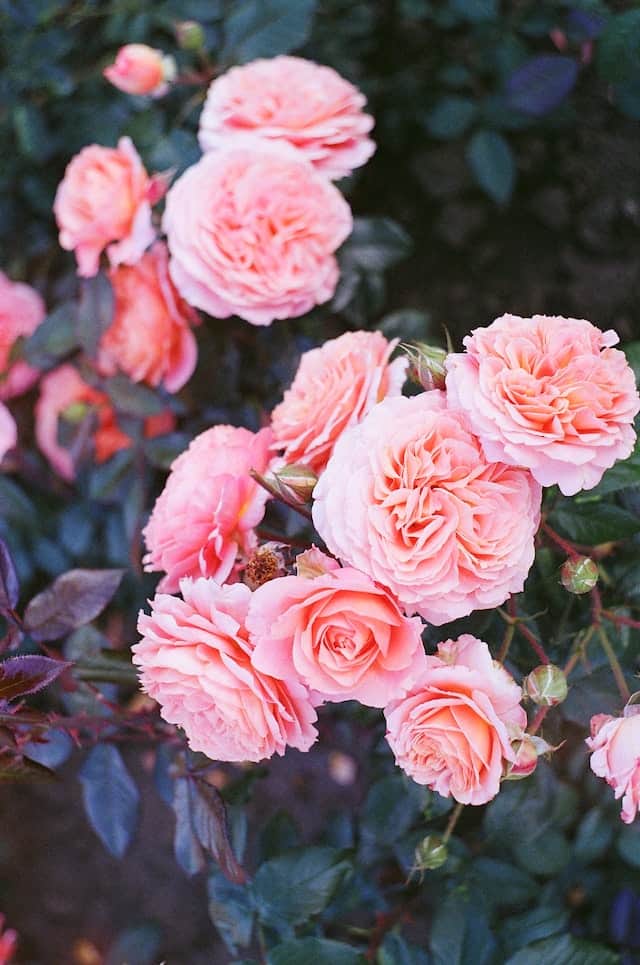
To truly appreciate the beauty and longevity of Clematis blooms, why not consider companion planting? Pairing Clematis with other flowering plants can enhance visual interest while ensuring that both species thrive. Here are some companions that work particularly well:
Roses: The combination of clematis and roses can produce breathtaking displays. The two plants typically bloom at different times, allowing for a stunning juxtaposition of colors.
Perennials: Plants like asters and daylilies can provide structure and additional blooms as the Clematis transitions through its own blooming cycle.
Shrubs: Evergreen shrubs, such as Boxwoods or Junipers, can offer year-round texture and serve as an excellent backdrop to your Clematis, adding depth to your garden’s design.
The Future of Clematis Hybridization
As gardening continues to evolve, so does the world of Clematis. Advances in hybridization techniques are leading to new varieties that not only offer unique colors and shapes but also extended blooming seasons. Botanists and horticulturists are actively exploring new breeding methods to produce Clematis that are more resilient, disease-resistant, and adaptable to changing climate conditions.
The incorporation of traits from various species means we may soon see Clematis varieties capable of blooming for even longer periods, enhancing their appeal even further. For passionate gardeners and newcomers alike, the future of Clematis blooms looks bright!
Conclusion: Your Long-Blooming Clematis Awaits
In summary, if you’re yearning for Clematis that blooms the longest, it’s essential to select the right varieties, understand their needs, and implement effective care strategies. From the majestic ‘Jackmanii’ to the charming ‘Cassandra,’ each variety brings its unique flair to the garden, creating cascading displays of color throughout the growing season.


